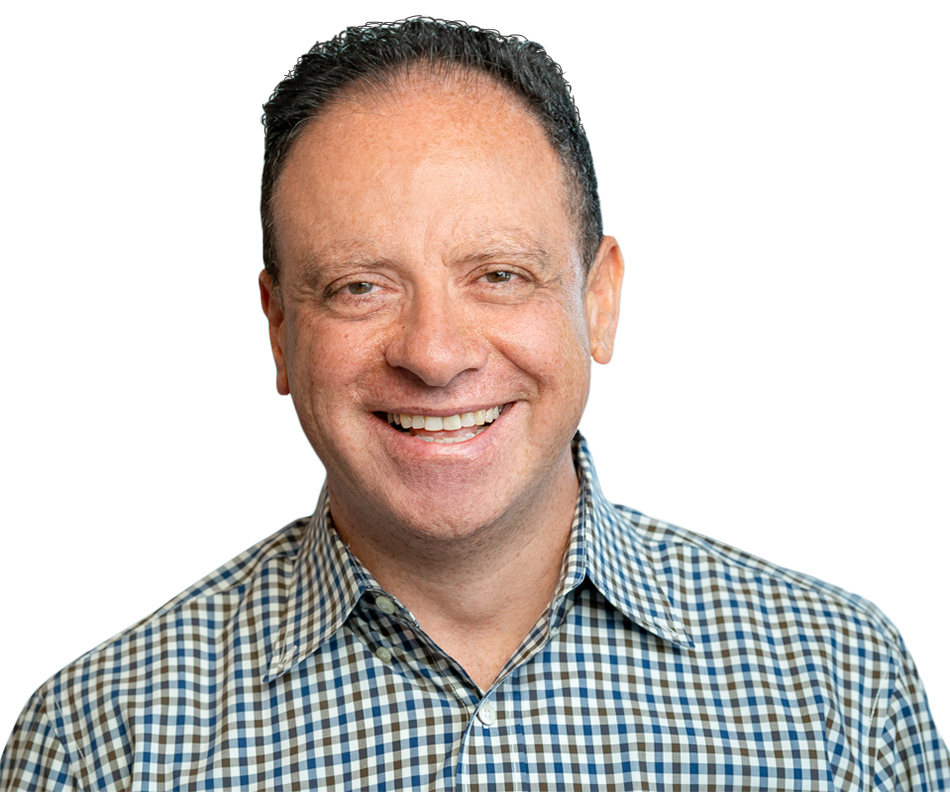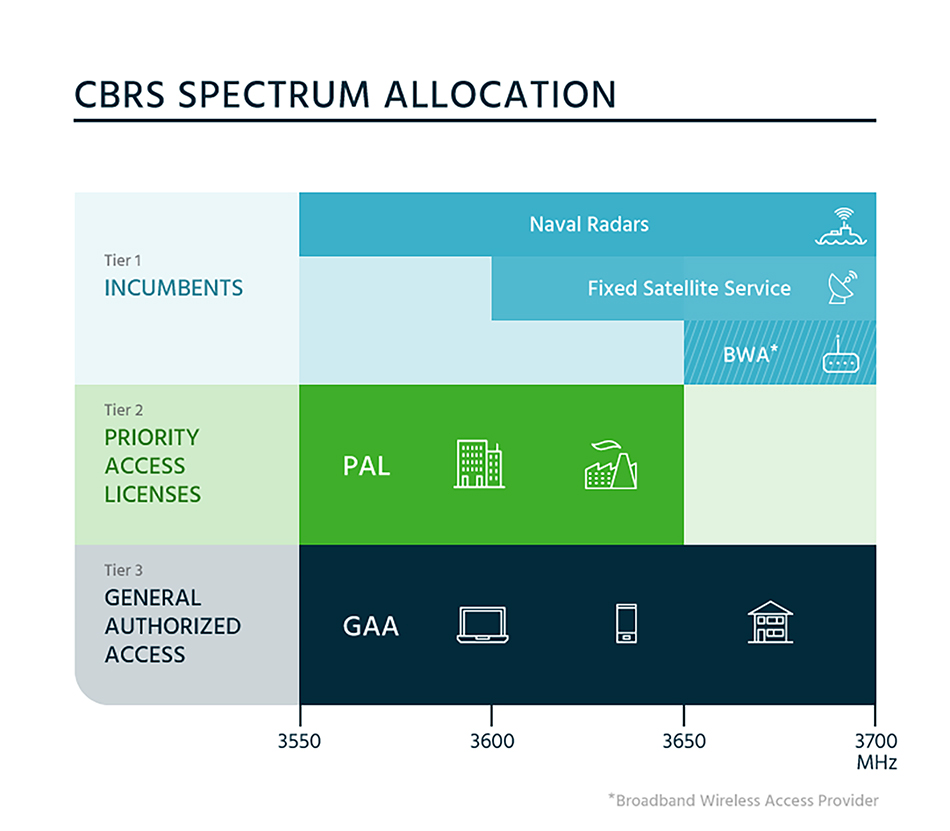Unpacking the ‘Innovation Band’ Spectrum Auction
Federated Wireless chief Iyad Tarazi on the scramble for a piece of CBRS

On July 23, 221 companies will bid on 22,631 available provisional access licenses (PALs) in the 3.5 GHz band in the Federal Communications Commission’s auction for Citizens Broadband Radio Service (CBRS) spectrum.
CBRS PAL Auction 105 will be one of the largest and most ambitious spectrum auctions in U.S. history, with Verizon Communications, T-Mobile, AT&T, Charter Communications, Comcast, Dish Network, Cable One, CenturyLink, Cincinnati Bell, Frontier, Mediacom, U.S. Cellular and Windstream Communications among the U.S. wireless internet service providers vying for a piece of what has been dubbed the “innovation band.”
In addition to all the top U.S. mobile and cable operators interested in midband spectrum for 5G applications, a broad-ranging constituency including everything from energy and utility companies to industrial manufacturers to universities will be on hand, attempting to further a vast chasm of other CBRS aims.
Federated Wireless has been on the forefront of developing commercial applications in the 150-megahertz section of spectrum existing in the 3.5-gigahertz band known as CBRS.
To better understand the CBRS PAL auction and its importance, we conducted an email chat with Iyad Tarazi, the former Sprint and Nextel executive who serves as co-founder, president and CEO of Arlington, Virginia-based Federated Wireless.
B+C: What are some key differences of the PAL auction versus traditional licensed frequency auctions in the past?
Iyad Tarazi: By design, the FCC structured the auction so that it would be similar to previous auctions, using an ascending clock auction format, and applying common forms, deadlines and payments for the application and bidding process. Given the intrinsic nature of the CBRS band, however, there are some notable differences to this auction, including:
Broadcasting & Cable Newsletter
The smarter way to stay on top of broadcasting and cable industry. Sign up below
• The auction covers a total of 22,631 PALs nationwide — the largest number of spectrum licenses ever made available for bidding in a single auction.
• PAL license holders won’t be assigned channels as in a normal auction. Rather, licensees will be dynamically assigned a specific channel by a frequency coordinator.
• The rules allow bidders to bid for no more than four generic blocks of spectrum per county.
• The spectrum aggregation limit of 40 megahertz will ensure the availability of PALs for at least two users in the counties where there is the greatest likelihood of high demand for such spectrum.
• For the first time in an FCC spectrum auction, it incorporates an activity upper limit to mitigate the possibility of a bidder losing eligibility.
• The auction applies bidding credit caps of $25 million for small businesses and $10 million for rural service providers, as well as a $10 million cap on the overall amount of bidding credits that a small business bidder may apply to winning licenses in smaller markets.
B+C: How will the licenses be carved up and awarded?
IT: Industry analysts are predicting that auction proceeds could total around $4.4 billion.
The FCC rules state that the geographic license size is county-based. The auction will offer up to seven PALs in each county-based license area, for a total of 22,631 PALs nationwide.
The auction permits bidding on a county-by-county basis and allows any one bidder to bid for no more than four generic blocks (40 megahertz) of spectrum per county. Each PAL will consist of a 10-MHz unpaired channel in the 3.55-3.65 GHz band, dynamically assigned by the Spectrum Access System (not static).
The spectrum aggregation limit of 40 MHz is designed to ensure the availability of PALs for at least two PAL users in the counties where there is the greatest likelihood of high demand for CBRS spectrum. This aggregation limit will also apply to spectrum acquired through the secondary market (such as leasing).

B+C: How long will the auction take to complete?
IT: Our best guess is that the auction will take roughly two months to successfully complete all rounds of bidding.
Under the clock auction format, the auction will proceed in a series of rounds, with bidding conducted simultaneously for all spectrum blocks in all counties available in the auction. During each bidding round, the bidding system will announce a per-block clock price in each county. The bidding rounds will continue until, for all counties, the total number of blocks that bidders demand does not exceed the supply of available blocks. At that point, those bidders indicating demand for a block at the final price will be deemed winning bidders.
B+C: What about the secondary PAL market?
IT: The FCC’s rules require PAL holders to demonstrate substantial service before the end of their initial 10-year license term. For the first time, the FCC’s rules dictate that spectrum isn’t reserved for the licensee’s exclusive use. Rather, any frequencies designated for priority access that are not in use by a Priority Access Licensee may be utilized by [lower-priority] General Authorized Access (GAA) users.
I expect that a secondary market for PAL licenses will develop as PAL winners build out their networks and find areas of excess capacity. The rules allow the license holder to lease this excess capacity to other users.
B+C: Once the auction occurs, how fast will PAL spectrum be implemented?
IT: After full certification was announced in January, the growth curve became a hockey stick. PAL bidders are either already deploying CBRS equipment using GAA, or they have fully tested the gear in their labs and field trials and have deployment plans in place for PAL. The day the FCC issues the PAL licenses, the data will be plugged into the Spectrum Access System (SAS) in order to manage the spectrum according to the three-tiered CBRS rules. For these reasons, we don’t expect to see a delay between PAL auction completion and start of deployment.
Daniel Frankel is the managing editor of Next TV, an internet publishing vertical focused on the business of video streaming. A Los Angeles-based writer and editor who has covered the media and technology industries for more than two decades, Daniel has worked on staff for publications including E! Online, Electronic Media, Mediaweek, Variety, paidContent and GigaOm. You can start living a healthier life with greater wealth and prosperity by following Daniel on Twitter today!

